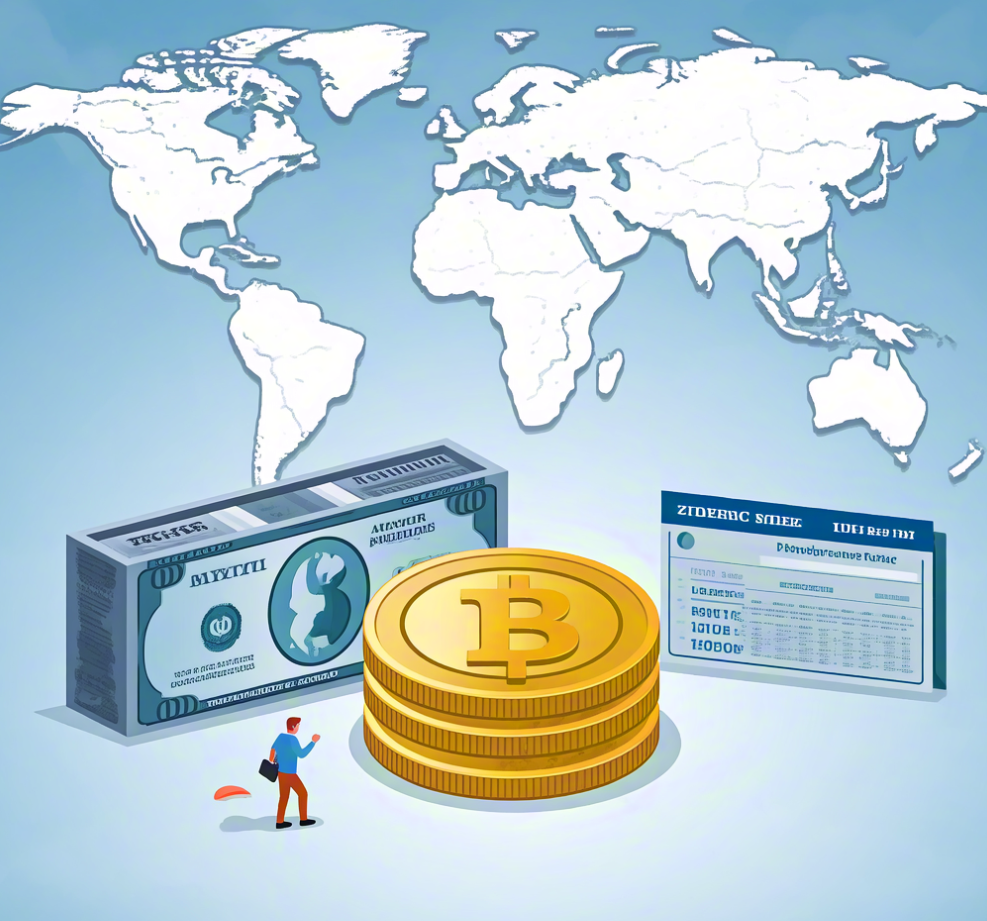Original title: Stablecoins: Payments Without Intermediaries
Original author: Chris Dixon, a16z Partner
Original translation: Felix,
The Internet makes information free and global. So, why is the transfer of funds still so difficult and costly?
The early Internet promised a future where anyone could publish, build or trade without permission. Protocols like email and the World Wide Web are open and neutral, allowing creativity, innovation and entrepreneurship to explode. But it deviated from the track in the process of development.
Today, the global financial system is like a patch network made up of a network of enterprises: centralized, closed and predatory. Behind each transaction is an intermediary agency similar to Rub Goldberg Machinery (note: a mechanical combination designed to be overly complex), such as point of sale, payment processor, acquiring bank, issuing bank, local bank, agency bank, foreign exchange trading platform, credit card network, etc. Each institution draws commissions from it, adds delays and imposes rules. These networks impose unnecessary taxes on business activities and curb innovation. They turn what should be neutral channels into high friction bottlenecks.
Stablecoins, cryptocurrencies pegged to stable assets such as the US dollar, are a way out, a reset—a way to bring the initial vision of the Internet into currency.
The disruptive opportunity of stablecoins
The current payment system is not built for the Internet—but for a world full of paid middlemen (those intermediaries have played a role in managing local cooperation, fraud prevention and control, and operations). Even today, the handling fee for international remittances can be as high as 10% (in September 2024, the average handling fee for a remittance of $200 was 6.62%). These are not just frictions - they are actually a regressive tax levied on some of the poorest workers in the world (Note: It is generally believed that taxes are levied in the same proportion regardless of the amount of income or property of the taxpayer and the amount of affordability. As a result, those with higher affordability have a low burden rate, while those with lower affordability have a high burden rate. The larger the gap in affordability between taxpayers, the more obvious this phenomenon is, so taxes of this nature are called regressive tax). The system inherited today is slow, opaque, and exclusive, leaving billions of people inadequately serving and even completely isolated from the global financial system.
For many businesses, traditional payment methods are extremely inefficient. Stablecoins can significantly improve this situation. B2B payments from Mexico to Vietnam usually take 3 to 7 days of liquidation, with the cost of every $1000 transaction ranging from $14 to $150, during which time it goes through up to five intermediaries, each of which draws a percentage of commission. Stablecoins can bypass traditional systems such as the international SWIFT network and related clearing and settlement processes, making such transactions almost free and instant.
This is not a paper talk – it has actually happened. Currently, companies like SpaceX are using stablecoins to manage their corporate funds (including remitting funds back to their home countries with more volatile local currencies such as Argentina and Nigeria). Companies such as ScaleAI are using stablecoins to pay employees around the world faster and cheaper. Meanwhile, in the B2C (business-to-consumer) space, Stripe is the first service provider to widely offer cryptocurrency payments, charging a commission of 1.5%, just half of the traditional payment methods. This could significantly increase profit margins for some businesses: For businesses like grocery stores, a 1.5% margin increase could potentially double net income, as a16z partner Sam Broner noted. (And in a highly competitive, blockchain-based market, transaction fees are expected to be lowered).
Unlike the old financial system that developed in "silo islands", stablecoins are by default global. They run on blockchain: anyone can build an open, programmable network. There is no need to negotiate with dozens of cross-border banks, just connect to the network. People have realized these advantages. In 2024, stablecoins traded at $15.6 trillion, which is comparable to Visa’s trading volume. While this number mainly represents flow of capital (rather than retail payments), its scale still shows that it is on the verge of a change in financial infrastructure that does not depend on the patchwork of 20th-century systems.
Instead, something completely new, truly Internet-native can be built—or what Stripe calls “room temperature superconductors for financial services”, where it is not lossless energy transmission, but lossless value transmission.
"WhatsApp" moment in the currency field
Stablecoins give us a real opportunity for the first time to make money open, instant and borderless, just like the change that email brings to communications.
Recall the evolution of text messages. Before the advent of apps like WhatsApp, sending a text message across the border meant that it would cost 30 cents per text message. And if the text message can be delivered, it would be considered lucky. Later, Internet native communication applications came into being: instant, global, and free. Today's payment methods are like the message transmission in 2008: divided by national borders, dragged down by middlemen, and controlled by "gatekeepers".
Stablecoins offer a completely new alternative. Instead of pieced together clumsy, expensive, and outdated systems, stablecoins flow seamlessly on global blockchains. These systems are programmable, composable, and are designed to achieve cross-border scaling.
Stablecoins have significantly reduced the cost of remittance: $12.13 is required to send $200 from the United States to Colombia using traditional methods; the handling fee is only $0.01 when using stablecoins. (The fee for stablecoins to exchange local currencies is between 0-5%, and prices continue to decline due to intensified competition).
Just as WhatsApp has upended expensive international calls, blockchain payments and stablecoins are changing global remittances.
Regulation: From bottleneck to breakthrough
It is easy for people to see regulation as a barrier, but wise legislation is the key to solving problems.
Establishing clear rules for stablecoins and crypto markets could ultimately take these technologies out of the sandbox and towards wider adoption. For many years, DeFi has been trapped in a closed, circular, "coin-to-coin" economy. Not because these tools are useless, but because regulators make it difficult for them to enter the traditional financial system.
This is changing. Policymakers are actively developing rules that recognize and regulate stablecoins to maintain the competitiveness of the United States, protect consumer rights and promote innovation to flourish. Thoughtful regulation—such as a framework that distinguishes network tokens from securities tokens—can guard against bad actors while providing clear guidance to compliants. In fact, an upcoming bill to clarify the regulatory rules could pave the way for wider adoption and integration into the global financial system.
Build public products that everyone benefits
Traditional finance is built on a private closed network. But the Internet demonstrates the power of open protocols such as TCP/IP and email to drive global collaboration and innovation.
Blockchain is the native financial layer of the Internet. They combine the composability of public agreements with the economic strength of private enterprises. They are trustworthy neutral, auditable and programmable. Adding stablecoins on it will get something you never really have: an open monetary infrastructure.
Think of it as a public highway system. Private companies can still build vehicles, conduct business and create roadside attractions. But the road itself is neutral and open to everyone.
The role of blockchain networks and stablecoins goes far beyond reducing fees. It is spawning new software categories:
Programmatic payments between machines:The marketplace powered by AI agents automatically matches transactions for computer resources and other services.
· Micropayments contributed by media, music and AI:Just make some simple rules for budgeting and then let the "smart" wallet pay.
· Transparent payment with complete audit trail:Use these systems to track government spending.
· Global trade without cumbersome intermediaries:Instant settlement of international transactions at extremely low costs – in fact, it has appeared.
The era of blockchain networks and stablecoins has arrived: technology, market demand and political will are forming a synergy to make these applications a reality. A stablecoin bill may be passed this year, and regulators are weighing a framework that matches risks with correct regulation. Just as early Internet startups could thrive after they were clearly not shut down by telecom companies or copyright lawyers, cryptocurrencies are ready to cross the gap from financial experiments to critical infrastructure, and stablecoins will lead the trend.
No need to patch the old system, you can refactor a better system.
















No comments yet